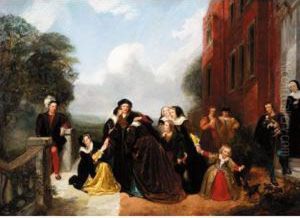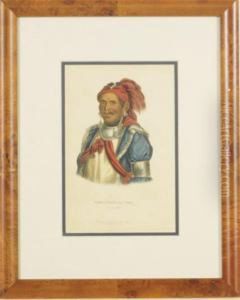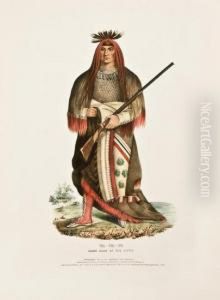Thomas A. Woolnoth Paintings
Thomas Anthony Woolnoth was a 19th-century English engraver known for his portraits and subject pieces. Born in 1785, Woolnoth's life spanned a period of significant change and development in the arts during the British Regency and Victorian eras. While not as widely recognized as some of his contemporaries, Woolnoth made contributions to the world of art through his mastery of engraving, a form of printmaking that was highly popular at the time.
Woolnoth's work often involved the translation of paintings into engravings, which would then be accessible to a broader audience through prints. This was a common practice in an era when the dissemination of images relied on the creation of physical copies, rather than the digital or photographic reproductions we are familiar with today. Engravings by Woolnoth and his peers played a crucial role in the spread of artistic styles and the popularization of portraiture among the middle class.
Not much is detailed about his personal life or training, but Woolnoth's professional life was marked by the production of a number of notable engravings. Among his works are images of Lord Byron, a leading figure of the Romantic movement, and other notable personalities of the time. His engravings were often featured in books and periodicals, serving both as standalone works of art and as illustrations that complemented the written word.
The quality of Woolnoth's engravings suggests that he would have undergone a rigorous apprenticeship, as was customary in the arts during the 18th and 19th centuries. Engravers needed a steady hand and a keen eye for detail, as well as an understanding of the interplay between light and shadow, line and form.
Thomas Anthony Woolnoth's death in 1857 marked the end of a career that contributed to the rich visual culture of his time. Although engravings have been largely supplanted by other forms of image reproduction, the work of artists like Woolnoth remains an important part of the history of visual arts. His engravings continue to be appreciated for their craftsmanship and as a window into the aesthetics and societal interests of the Regency and early Victorian periods.


